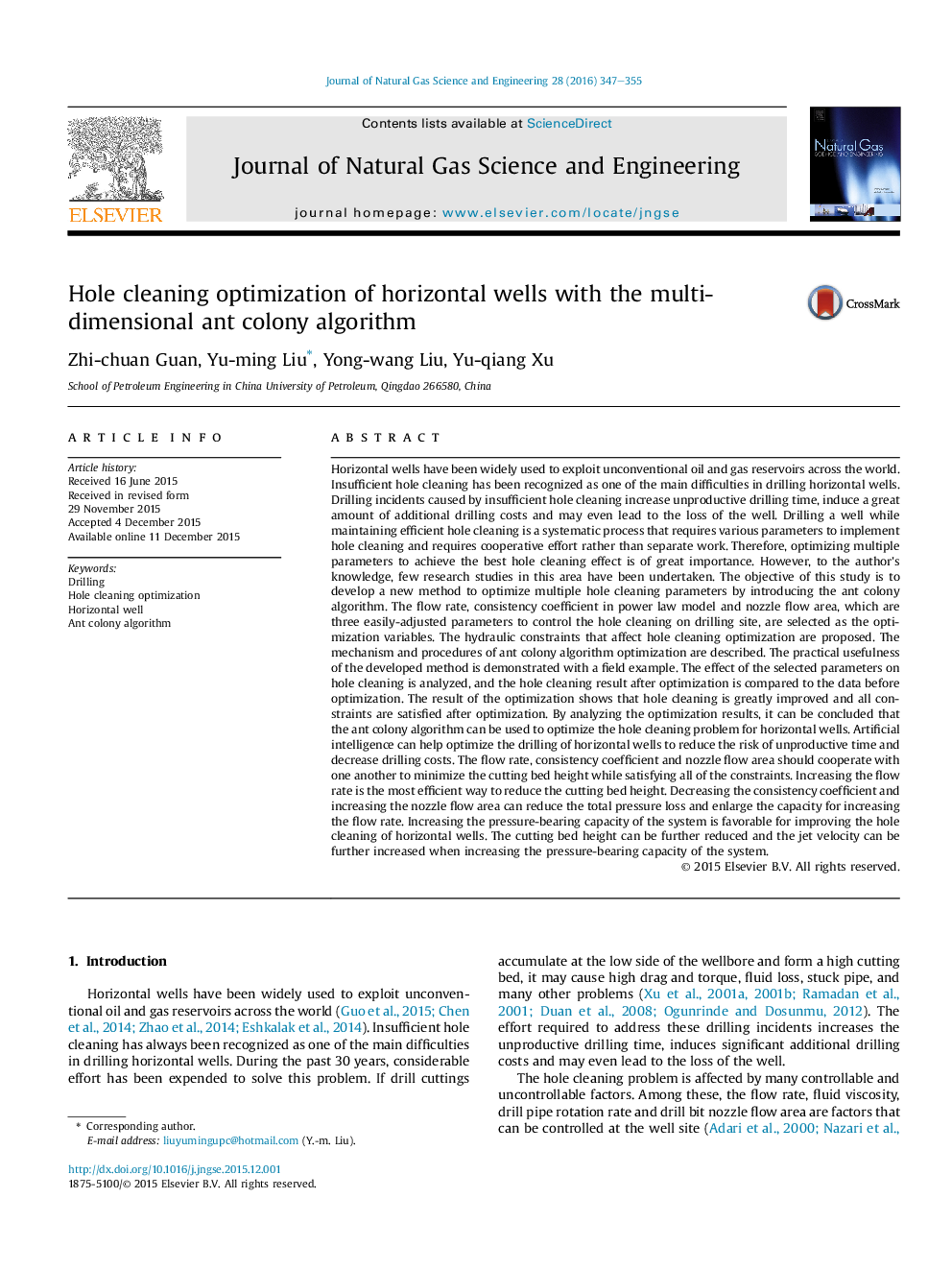| کد مقاله | کد نشریه | سال انتشار | مقاله انگلیسی | نسخه تمام متن |
|---|---|---|---|---|
| 1757294 | 1523013 | 2016 | 9 صفحه PDF | دانلود رایگان |
• We do the multi-parameter hole cleaning optimization with the ant colony algorithm.
• Hole cleaning is greatly improved by conducting the optimization.
• The operational parameters should cooperate while satisfying all constraints.
• Increasing the flow rate is most efficient to reduce the cutting bed height.
• Increasing the system pressure-bearing capacity is favorable for hole cleaning.
Horizontal wells have been widely used to exploit unconventional oil and gas reservoirs across the world. Insufficient hole cleaning has been recognized as one of the main difficulties in drilling horizontal wells. Drilling incidents caused by insufficient hole cleaning increase unproductive drilling time, induce a great amount of additional drilling costs and may even lead to the loss of the well. Drilling a well while maintaining efficient hole cleaning is a systematic process that requires various parameters to implement hole cleaning and requires cooperative effort rather than separate work. Therefore, optimizing multiple parameters to achieve the best hole cleaning effect is of great importance. However, to the author's knowledge, few research studies in this area have been undertaken. The objective of this study is to develop a new method to optimize multiple hole cleaning parameters by introducing the ant colony algorithm. The flow rate, consistency coefficient in power law model and nozzle flow area, which are three easily-adjusted parameters to control the hole cleaning on drilling site, are selected as the optimization variables. The hydraulic constraints that affect hole cleaning optimization are proposed. The mechanism and procedures of ant colony algorithm optimization are described. The practical usefulness of the developed method is demonstrated with a field example. The effect of the selected parameters on hole cleaning is analyzed, and the hole cleaning result after optimization is compared to the data before optimization. The result of the optimization shows that hole cleaning is greatly improved and all constraints are satisfied after optimization. By analyzing the optimization results, it can be concluded that the ant colony algorithm can be used to optimize the hole cleaning problem for horizontal wells. Artificial intelligence can help optimize the drilling of horizontal wells to reduce the risk of unproductive time and decrease drilling costs. The flow rate, consistency coefficient and nozzle flow area should cooperate with one another to minimize the cutting bed height while satisfying all of the constraints. Increasing the flow rate is the most efficient way to reduce the cutting bed height. Decreasing the consistency coefficient and increasing the nozzle flow area can reduce the total pressure loss and enlarge the capacity for increasing the flow rate. Increasing the pressure-bearing capacity of the system is favorable for improving the hole cleaning of horizontal wells. The cutting bed height can be further reduced and the jet velocity can be further increased when increasing the pressure-bearing capacity of the system.
Journal: Journal of Natural Gas Science and Engineering - Volume 28, January 2016, Pages 347–355
